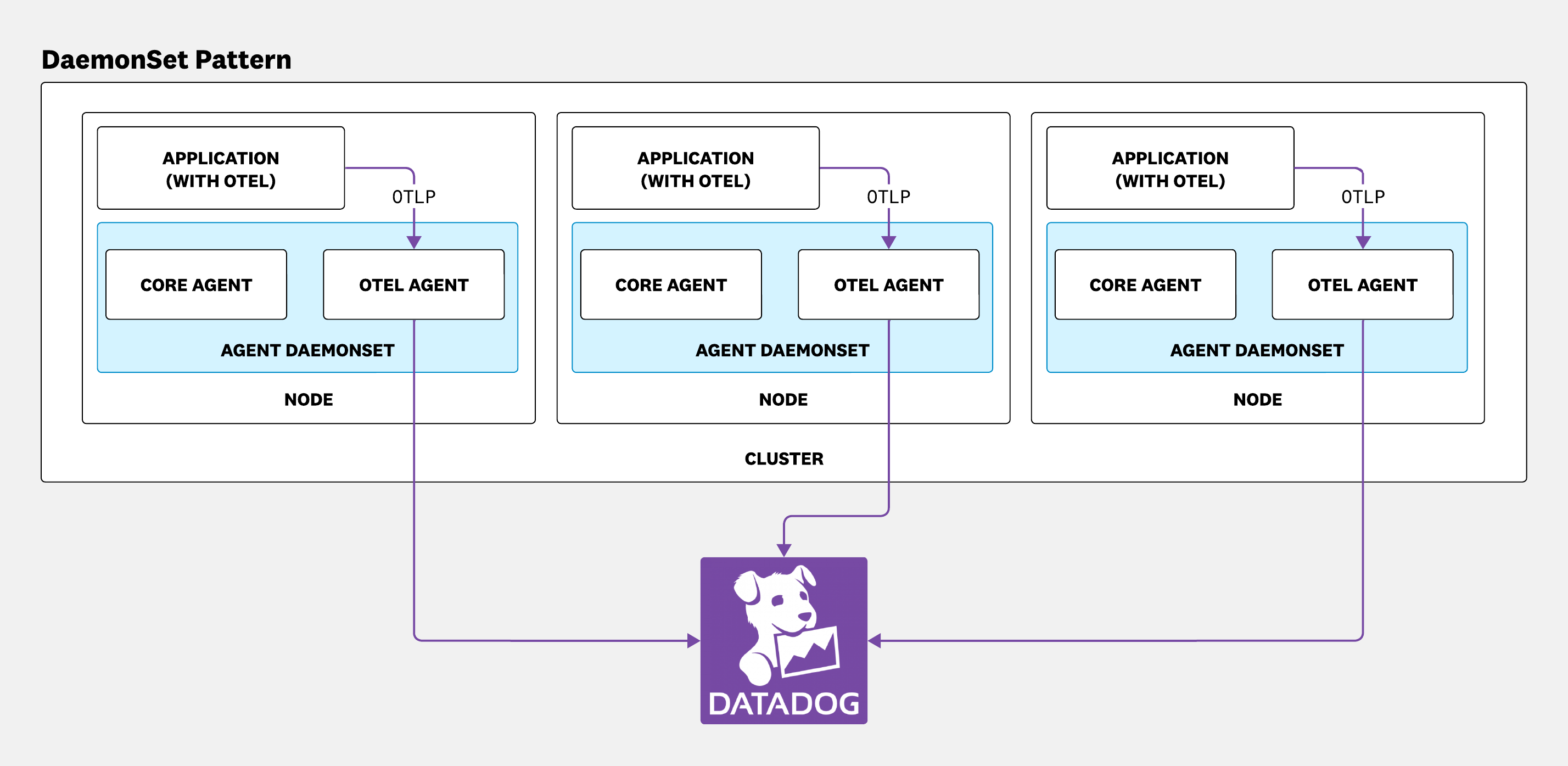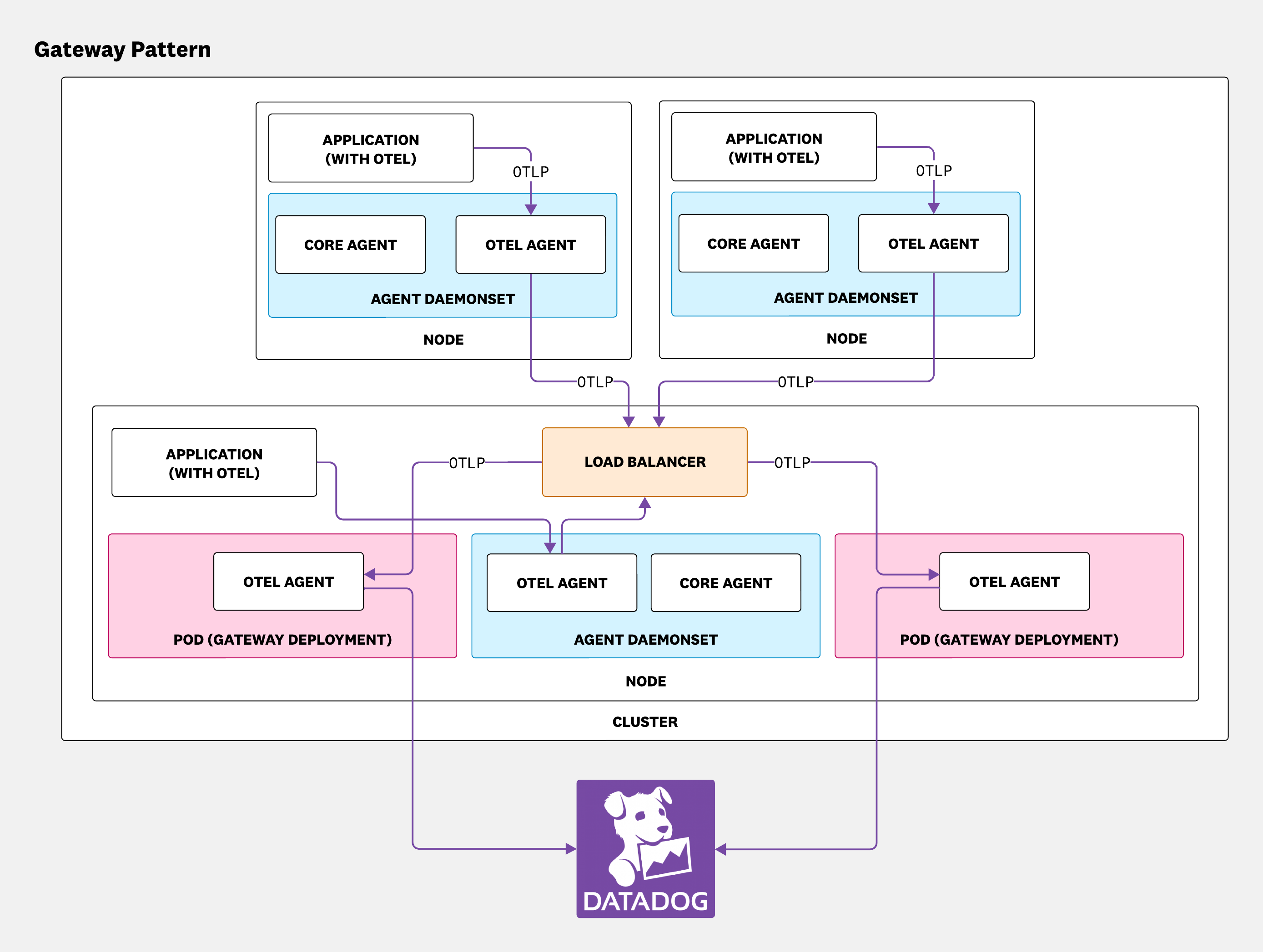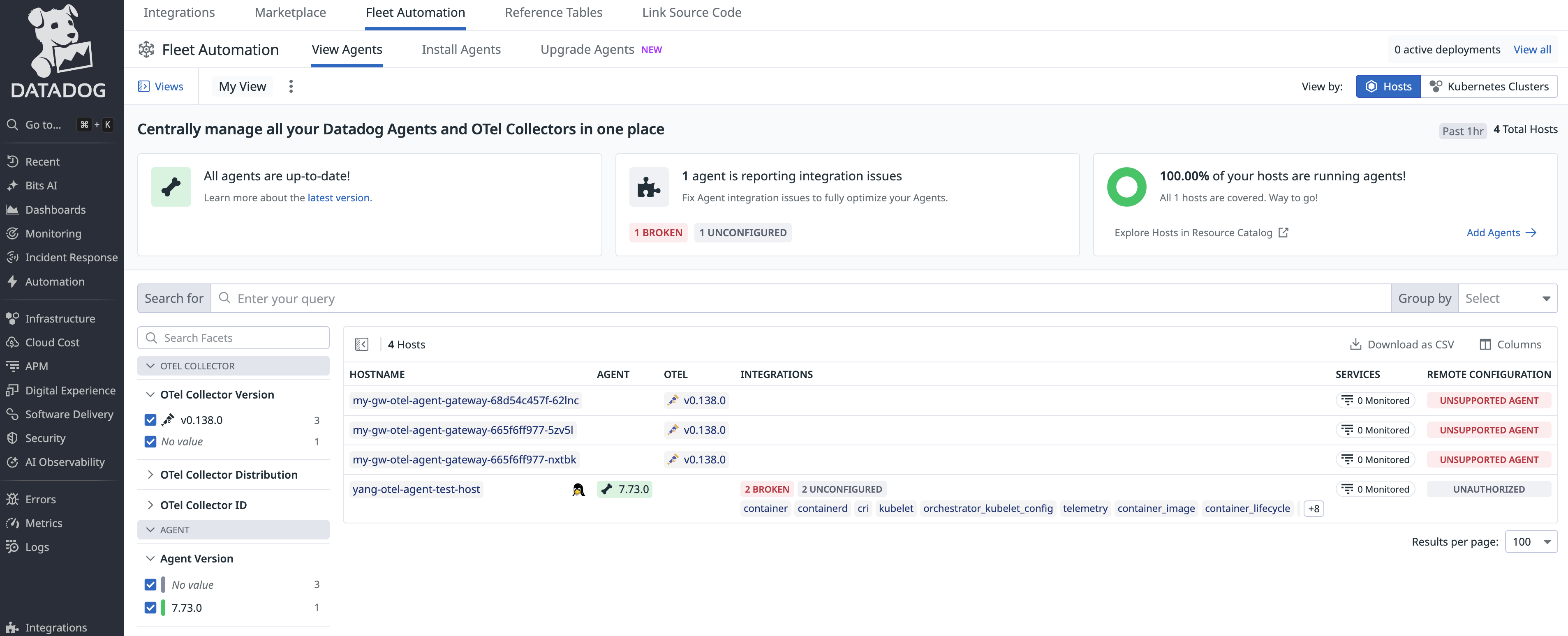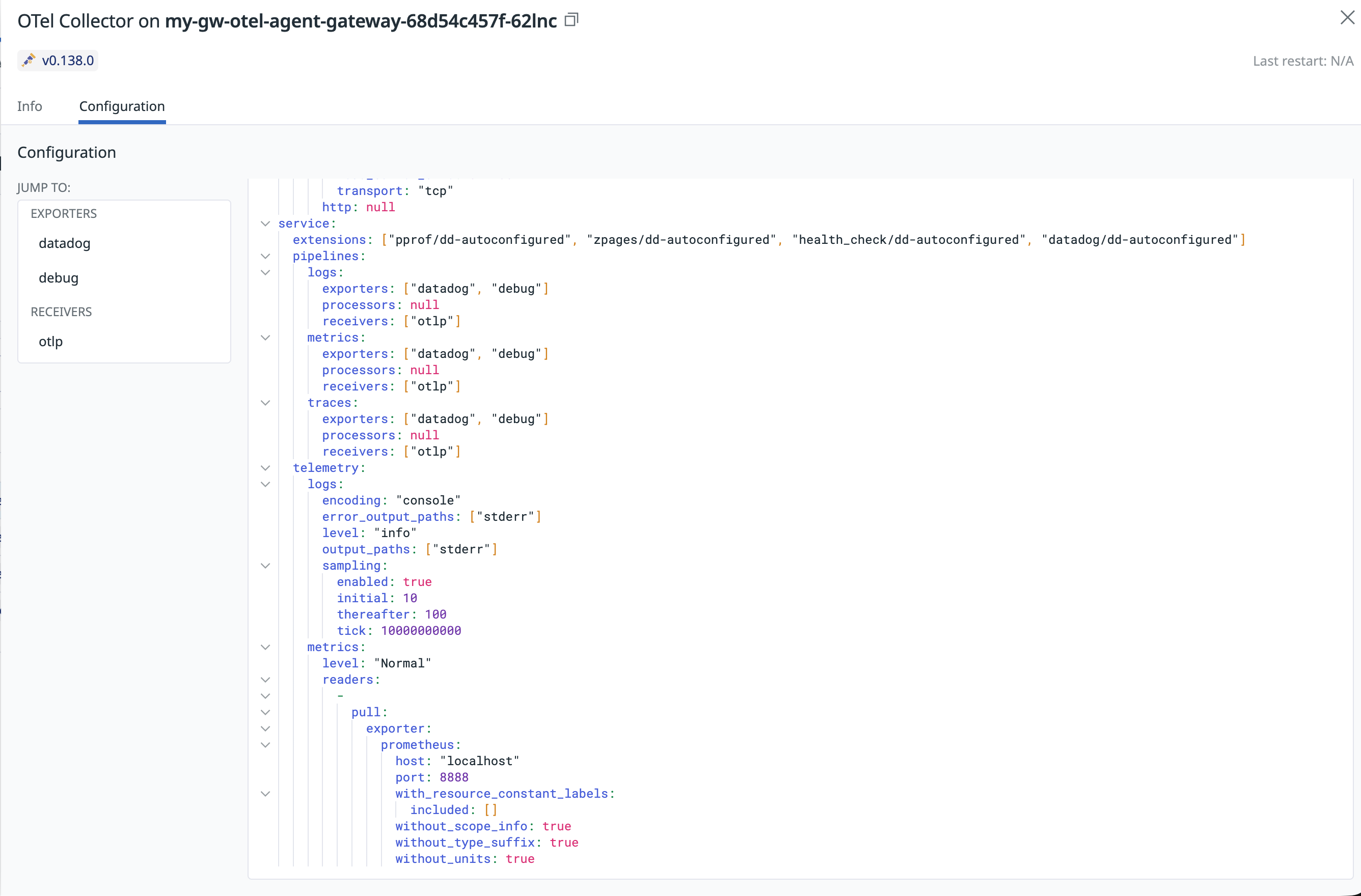- Essentials
- Getting Started
- Agent
- API
- APM Tracing
- Containers
- Dashboards
- Database Monitoring
- Datadog
- Datadog Site
- DevSecOps
- Incident Management
- Integrations
- Internal Developer Portal
- Logs
- Monitors
- Notebooks
- OpenTelemetry
- Profiler
- Search
- Session Replay
- Security
- Serverless for AWS Lambda
- Software Delivery
- Synthetic Monitoring and Testing
- Tags
- Workflow Automation
- Learning Center
- Support
- Glossary
- Standard Attributes
- Guides
- Agent
- Integrations
- Developers
- Authorization
- DogStatsD
- Custom Checks
- Integrations
- Build an Integration with Datadog
- Create an Agent-based Integration
- Create an API-based Integration
- Create a Log Pipeline
- Integration Assets Reference
- Build a Marketplace Offering
- Create an Integration Dashboard
- Create a Monitor Template
- Create a Cloud SIEM Detection Rule
- Install Agent Integration Developer Tool
- Service Checks
- IDE Plugins
- Community
- Guides
- OpenTelemetry
- Administrator's Guide
- API
- Partners
- Datadog Mobile App
- DDSQL Reference
- CoScreen
- CoTerm
- Remote Configuration
- Cloudcraft (Standalone)
- In The App
- Dashboards
- Notebooks
- DDSQL Editor
- Reference Tables
- Sheets
- Monitors and Alerting
- Watchdog
- Metrics
- Bits AI
- Internal Developer Portal
- Error Tracking
- Change Tracking
- Service Management
- Service Level Objectives
- Incident Management
- On-Call
- Status Pages
- Event Management
- Case Management
- Actions & Remediations
- Infrastructure
- Cloudcraft
- Resource Catalog
- Universal Service Monitoring
- End User Device Monitoring
- Hosts
- Containers
- Processes
- Serverless
- Network Monitoring
- Storage Management
- Cloud Cost
- Application Performance
- APM
- APM Terms and Concepts
- Application Instrumentation
- APM Metrics Collection
- Trace Pipeline Configuration
- Correlate Traces with Other Telemetry
- Trace Explorer
- Recommendations
- Code Origin for Spans
- Service Observability
- Endpoint Observability
- Dynamic Instrumentation
- Live Debugger
- Error Tracking
- Data Security
- Guides
- Troubleshooting
- Continuous Profiler
- Database Monitoring
- Agent Integration Overhead
- Setup Architectures
- Setting Up Postgres
- Setting Up MySQL
- Setting Up SQL Server
- Setting Up Oracle
- Setting Up Amazon DocumentDB
- Setting Up MongoDB
- Connecting DBM and Traces
- Data Collected
- Exploring Database Hosts
- Exploring Query Metrics
- Exploring Query Samples
- Exploring Database Schemas
- Exploring Recommendations
- Troubleshooting
- Guides
- Data Streams Monitoring
- Data Jobs Monitoring
- Data Observability
- Digital Experience
- Real User Monitoring
- Synthetic Testing and Monitoring
- Continuous Testing
- Product Analytics
- Software Delivery
- CI Visibility
- CD Visibility
- Deployment Gates
- Test Optimization
- Code Coverage
- PR Gates
- DORA Metrics
- Feature Flags
- Security
- Security Overview
- Cloud SIEM
- Code Security
- Cloud Security
- App and API Protection
- Workload Protection
- Sensitive Data Scanner
- AI Observability
- Log Management
- Administration
Install the DDOT Collector as a Gateway on Kubernetes
This product is not supported for your selected Datadog site. ().
Support for installing the DDOT Collector as a gateway on Kubernetes is in Preview.
This guide assumes you are familiar with deploying the DDOT Collector as a DaemonSet. For more information, see Install the DDOT Collector as a DaemonSet on Kubernetes.
Overview
The OpenTelemetry Collector can be deployed in multiple ways. The daemonset pattern is a common deployment where a Collector instance runs on every Kubernetes node alongside the core Datadog Agent.
The gateway pattern provides an additional deployment option that uses a centralized, standalone Collector service. This gateway layer can perform actions such as tail-based sampling, aggregation, filtering, and routing before exporting the data to one or more backends such as Datadog. It acts as a central point for managing and enforcing observability policies.
When you enable the gateway:
- A Kubernetes Deployment (
<RELEASE_NAME>-datadog-otel-agent-gateway-deployment) manages the standalone gateway Collector pods. - A Kubernetes Service (
<RELEASE_NAME>-datadog-otel-agent-gateway) exposes the gateway pods and provides load balancing. - The existing DaemonSet Collector pods are configured by default to send their telemetry data to the gateway service instead of directly to Datadog.
Requirements
Before you begin, ensure you have the following:
- Datadog Account:
- A Datadog account.
- Your Datadog API key.
- Software:
Installation and configuration
This guide uses the Datadog Helm chart to configure the DDOT Collector gateway. Check out all the available configurations on the Datadog Helm chart README.
Deploying the gateway with a daemonset
To get started, enable both the gateway and the DaemonSet Collector in your values.yaml file. This is the most common setup.
# values.yaml
targetSystem: "linux"
datadog:
apiKey: <DATADOG_API_KEY>
appKey: <DATADOG_APP_KEY>
# Enable the Collector in the Agent Daemonset
otelCollector:
enabled: true
# Enable the standalone Gateway Deployment
otelAgentGateway:
enabled: true
replicas: 3
nodeSelector:
# Example selector to place gateway pods on specific nodes
gateway: "true"
In this case, the daemonset Collector uses a default config that sends OTLP data to the gateway’s Kubernetes service:
receivers:
otlp:
protocols:
grpc:
endpoint: 0.0.0.0:4317
http:
endpoint: 0.0.0.0:4318
exporters:
debug:
verbosity: detailed
otlphttp:
endpoint: http://<release>-datadog-otel-agent-gateway:4318
tls:
insecure: true
processors:
infraattributes:
cardinality: 2
batch:
timeout: 10s
connectors:
datadog/connector:
traces:
compute_top_level_by_span_kind: true
service:
pipelines:
traces:
receivers: [otlp]
processors: [infraattributes, batch]
exporters: [otlphttp, datadog/connector]
metrics:
receivers: [otlp, datadog/connector]
processors: [infraattributes, batch]
exporters: [otlphttp]
logs:
receivers: [otlp]
processors: [infraattributes, batch]
exporters: [otlphttp]
The gateway Collector uses a default config that listens on the service ports and sends data to Datadog:
receivers:
otlp:
protocols:
grpc:
endpoint: 0.0.0.0:4317
http:
endpoint: 0.0.0.0:4318
exporters:
debug:
verbosity: detailed
datadog:
api:
key: ${env:DD_API_KEY}
processors:
batch:
timeout: 10s
extension:
datadog:
api:
key: ${env:DD_API_KEY}
deployment_type: gateway
service:
pipelines:
traces:
receivers: [otlp]
processors: [batch]
exporters: [datadog]
metrics:
receivers: [otlp]
processors: [batch]
exporters: [datadog]
logs:
receivers: [otlp]
processors: [batch]
exporters: [datadog]
Always configure
Adjust
otelAgentGateway.affinity or otelAgentGateway.nodeSelector to control the nodes where the gateway pods are scheduled.Adjust
otelAgentGateway.replicas (default is 1) to scale the number of gateway pods based on your needs.Deploying a standalone gateway
If you have an existing DaemonSet deployment, you can deploy the gateway independently.
# values.yaml
targetSystem: "linux"
fullnameOverride: "gw-only"
agents:
enabled: false
clusterAgent:
enabled: false
datadog:
apiKey: <DATADOG_API_KEY>
appKey: <DATADOG_APP_KEY>
otelAgentGateway:
enabled: true
replicas: 3
nodeSelector:
gateway: "true"
After deploying the gateway, you must update the configuration of your existing DaemonSet Collectors to send data to the new gateway service endpoint (for example, http://gw-only-otel-agent-gateway:4318).
Customizing Collector configurations
You can override the default configurations for both the DaemonSet and gateway Collectors using the datadog.otelCollector.config and otelAgentGateway.config values, respectively.
# values.yaml
targetSystem: "linux"
fullnameOverride: "my-gw"
datadog:
apiKey: <DATADOG_API_KEY>
appKey: <DATADOG_APP_KEY>
# Enable and configure the DaemonSet Collector
otelCollector:
enabled: true
config: |
receivers:
otlp:
protocols:
grpc:
endpoint: "localhost:4317"
exporters:
otlp:
endpoint: http://my-gw-otel-agent-gateway:4317
tls:
insecure: true
service:
pipelines:
traces:
receivers: [otlp]
exporters: [otlp]
metrics:
receivers: [otlp]
exporters: [otlp]
logs:
receivers: [otlp]
exporters: [otlp]
# Enable and configure the gateway Collector
otelAgentGateway:
enabled: true
replicas: 3
nodeSelector:
gateway: "true"
ports:
- containerPort: 4317
name: "otel-grpc"
config: |
receivers:
otlp:
protocols:
grpc:
endpoint: "0.0.0.0:4317"
exporters:
datadog:
api:
key: ${env:DD_API_KEY}
service:
pipelines:
traces:
receivers: [otlp]
exporters: [datadog]
metrics:
receivers: [otlp]
exporters: [datadog]
logs:
receivers: [otlp]
exporters: [datadog]
For the infraattributes processor to add Kubernetes tags, your telemetry must include the container.id resource attribute. This is often, but not always, added by OTel SDK auto-instrumentation.
If your tags are missing, see the troubleshooting guide for details on how to add this attribute.
If you set
fullnameOverride, the gateway's Kubernetes service name becomes -otel-agent-gateway otelAgentGateway.ports are exposed on this service. Ensure these ports match the OTLP receiver configuration in the gateway and the OTLP exporter configuration in the DaemonSet.The example configurations use insecure TLS for simplicity. Follow the OTel configtls instructions if you want to enable TLS.
Advanced use cases
Tail sampling with the load balancing exporter
A primary use case for the gateway is tail-based sampling. To ensure that all spans for a given trace are processed by the same gateway pod, use the load balancing exporter in your DaemonSet Collectors. This exporter consistently routes spans based on a key, such as traceID.
In the values.yaml below:
- The daemonset Collector (
datadog.otelCollector) is configured with theloadbalancingexporter, which uses the Kubernetes service resolver to discover and route data to the gateway pods. - The gateway Collector (
otelAgentGateway) uses thetail_samplingprocessor to sample traces based on defined policies before exporting them to Datadog.
# values.yaml
targetSystem: "linux"
fullnameOverride: "my-gw"
datadog:
apiKey: <DATADOG_API_KEY>
appKey: <DATADOG_APP_KEY>
otelCollector:
enabled: true
# RBAC permissions are required for the k8s resolver in the loadbalancing exporter
rbac:
create: true
rules:
- apiGroups: [""]
resources: ["endpoints"]
verbs: ["get", "watch", "list"]
config: |
receivers:
otlp:
protocols:
grpc:
endpoint: "localhost:4317"
exporters:
loadbalancing:
routing_key: "traceID"
protocol:
otlp:
tls:
insecure: true
resolver:
k8s:
service: my-gw-otel-agent-gateway
ports:
- 4317
service:
pipelines:
traces:
receivers: [otlp]
exporters: [loadbalancing]
otelAgentGateway:
enabled: true
replicas: 3
ports:
- containerPort: 4317
name: "otel-grpc"
config: |
receivers:
otlp:
protocols:
grpc:
endpoint: "0.0.0.0:4317"
processors:
tail_sampling:
decision_wait: 10s
policies: <Add your sampling policies here>
connectors:
datadog/connector:
exporters:
datadog:
api:
key: ${env:DD_API_KEY}
service:
pipelines:
traces/sample:
receivers: [otlp]
processors: [tail_sampling]
exporters: [datadog]
traces:
receivers: [otlp]
exporters: [datadog/connector]
metrics:
receivers: [datadog/connector]
exporters: [datadog]
To ensure APM Stats are calculated on 100% of your traces before sampling, the
datadog/connector runs in a separate pipeline without the tail_sampling processor. The Connector can run in either the DaemonSet or the gateway layer.Using a custom Collector image
To use a custom-built Collector image for your gateway, specify the image repository and tag under otelAgentGateway.image. If you need instructions on how to build the custom images, see Use Custom OpenTelemetry Components.
# values.yaml
targetSystem: "linux"
agents:
enabled: false
clusterAgent:
enabled: false
otelAgentGateway:
enabled: true
image:
repository: <YOUR REPO>
tag: <IMAGE TAG>
doNotCheckTag: true
ports:
- containerPort: "4317"
name: "otel-grpc"
config: | <YOUR CONFIG>
Enable Autoscaling with Horizontal Pod Autoscaler (HPA)
The DDOT Collector gateway supports autoscaling with the Kubernetes Horizontal Pod Autoscaler (HPA) feature. To enable HPA, configure otelAgentGateway.autoscaling.
# values.yaml
targetSystem: "linux"
agents:
enabled: false
clusterAgent:
enabled: false
otelAgentGateway:
enabled: true
ports:
- containerPort: "4317"
name: "otel-grpc"
config: | <YOUR CONFIG>
replicas: 4 # 4 replicas to begin with and HPA may override it based on the metrics
autoscaling:
enabled: true
minReplicas: 2
maxReplicas: 10
metrics:
# Aim for high CPU utilization for higher throughput
- type: Resource
resource:
name: cpu
target:
type: Utilization
averageUtilization: 80
behavior:
scaleUp:
stabilizationWindowSeconds: 30
scaleDown:
stabilizationWindowSeconds: 60
You can use resource metrics (CPU or memory), custom metrics (Kubernetes Pod or Object), or external metrics as autoscaling inputs. For resource metrics, ensure that the Kubernetes metrics server is running in your cluster. For custom or external metrics, consider configuring the Datadog Cluster Agent metrics provider.
Deploying a multi-layer gateway
For advanced scenarios, you can deploy multiple gateway layers to create a processing chain. To do this, deploy each layer as a separate Helm release, starting from the final layer and working backward.
Deploy Layer 1 (Final Layer): This layer receives from Layer 2 and exports to Datadog.
# layer-1-values.yaml targetSystem: "linux" fullnameOverride: "gw-layer-1" agents: enabled: false clusterAgent: enabled: false otelAgentGateway: enabled: true replicas: 3 nodeSelector: gateway: "gw-node-1" ports: - containerPort: "4317" hostPort: "4317" name: "otel-grpc" config: | receivers: otlp: protocols: grpc: endpoint: "0.0.0.0:4317" exporters: datadog: api: key: <API Key> service: pipelines: traces: receivers: [otlp] exporters: [datadog] metrics: receivers: [otlp] exporters: [datadog] logs: receivers: [otlp] exporters: [datadog]Deploy Layer 2 (Intermediate Layer): This layer receives from the DaemonSet and exports to Layer 1.
# layer-2-values.yaml targetSystem: "linux" fullnameOverride: "gw-layer-2" agents: enabled: false clusterAgent: enabled: false otelAgentGateway: enabled: true replicas: 3 nodeSelector: gateway: "gw-node-2" ports: - containerPort: "4317" hostPort: "4317" name: "otel-grpc" config: | receivers: otlp: protocols: grpc: endpoint: "0.0.0.0:4317" exporters: otlp: endpoint: http://gw-layer-1-otel-agent-gateway:4317 tls: insecure: true service: pipelines: traces: receivers: [otlp] exporters: [otlp] metrics: receivers: [otlp] exporters: [otlp] logs: receivers: [otlp] exporters: [otlp]Deploy DaemonSet: Configure the DaemonSet to export to Layer 2.
# daemonset-values.yaml targetSystem: "linux" datadog: apiKey: <DATADOG_API_KEY> appKey: <DATADOG_APP_KEY> otelCollector: enabled: true config: | receivers: otlp: protocols: grpc: endpoint: "localhost:4317" exporters: otlp: endpoint: http://gw-layer-2-otel-agent-gateway:4317 tls: insecure: true service: pipelines: traces: receivers: [otlp] exporters: [otlp] metrics: receivers: [otlp] exporters: [otlp] logs: receivers: [otlp] exporters: [otlp]
View gateway pods on Fleet Automation
The DDOT Collector gateway includes the Datadog extension by default. This extension exports Collector build information and configurations to Datadog, allowing you to monitor your telemetry pipeline from Infrastructure Monitoring and Fleet Automation.
To view your gateway pods:
- Navigate to Integrations > Fleet Automation.
- Select a gateway pod to view detailed build information and the running Collector configuration.
Known limitations
- Startup race condition: When deploying the DaemonSet and gateway in the same release, DaemonSet pods might start before the gateway service is ready, causing initial connection error logs. The OTLP exporter automatically retries, so these logs can be safely ignored. Alternatively, deploy the gateway first and wait for it to become ready before deploying the DaemonSet.
- Ignorable Core Agent Connection Logs: Gateway pods might generate warning logs about failing to connect to a core Datadog Agent (for example,
grpc: addrConn.createTransport failed to connect). This occurs because the gateway deployment does not include a core agent in the same pod. These logs are expected and can be safely ignored. This is being actively addressed.
Further reading
Additional helpful documentation, links, and articles:




